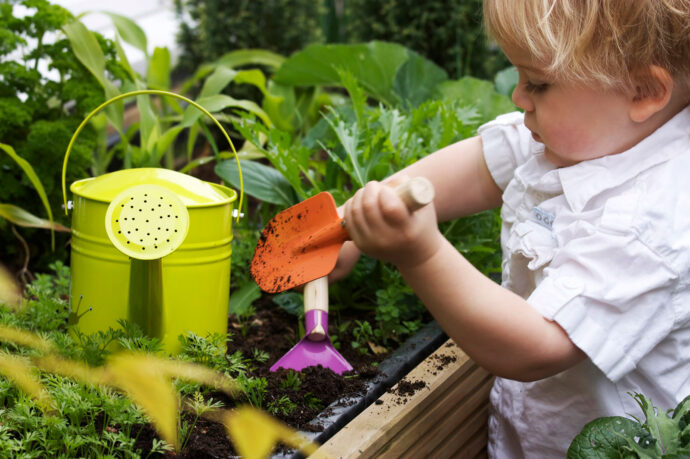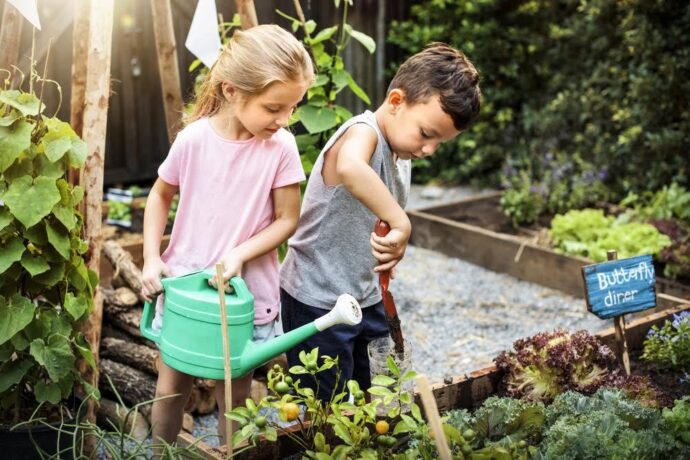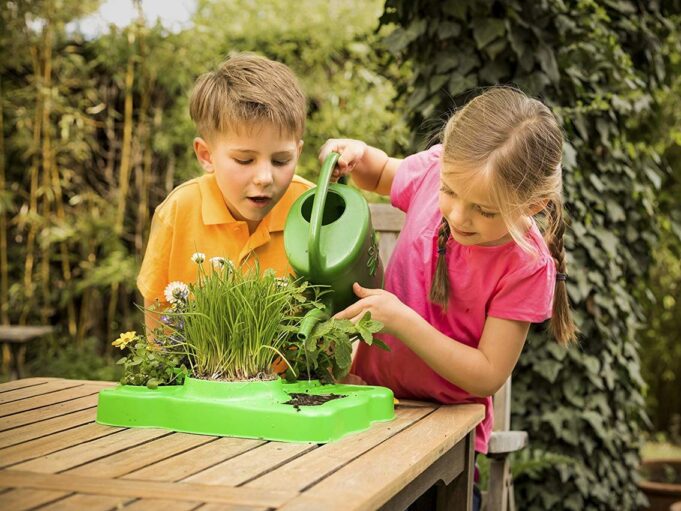Every parent in the world is looking for interesting hobbies and things they can do with their children. We tend to bond over movies or music but if you want to implement something more interesting, unique, and a healthier option than just sitting inside the home and staring at a screen, then you might want to explore horticulture. There are many conveniences that come with the process, and you don’t have to have a huge yard or space to grow some herbs. If you think that your child has the potential to be interested in this, then you can use this 2024 guide to learn how to get your kids started with gardening.
Don’t Make Them Use Your Equipment

Once your little ones show some interest in agriculture, be prepared to teach them about the tools they would need, how they can be used, and what they need to do to make sure they stay safe. If you let them use your tools, it is highly likely that they are going to be too big for their little hands, or they can be too heavy or even too sharp.
To avoid any injuries or discomfort while using them, invest in separate tools and equipment for your kids and teach them how to use them with ease. You can even go shopping together and let your little ones pick the colors and the size they are comfortable with. This way they will feel like they are making decisions and they are going to be more likely to look forward to the horticulture.
Don’t Confuse Them With Too Many Things
When we reach a certain age, we learn that some types of fruits and vegetables thrive when they have a lot of attention, when they get a lot of water, and when they are put directly in the sun. On the other hand, there are other types that are going to get diseased and perish if they are subjected to more nutrients than they want, and all these things defer depending on the type of flora.
If you try and teach your child all these things right away, or if you give them many different types of vegetation to care about, they are going to get confused. Start slowly, and plant things that are similar when it comes to watering and nurturing. As your child’s interest cultivates and as their understanding increases, you can introduce more varieties of fruits and vegetables.
Do Separate Research

As a parent, and as a grownup, you need to be the one who does the research and chooses the right time to start this process. Depending on what you want to seed, you will need to do it at separate times of the year.
Some vegetation needs to be planted in the early spring, while others will thrive if you seed it in late summer or early fall. Do your research to ensure that the seeds will develop and cultivate, and don’t forget to check how much water that exact type of plant needs, where they need to be placed; if they need a lot of watering, or just once or twice per week and so on. Do your homework if you don’t want your little one to get discouraged thinking that the greenery is not flourishing because of their mistakes.
Know What to Start With
There are hundreds of different seeds, fruits, and vegetables that you can cultivate in your garden, and if you live in an area where the winters are not too cold, and the summers are not too hot, it means that only the sky is the limit when it comes to options.
However, just because something can grow in your backyard, does not mean that all of those things are going to be interesting for your little ones. Experts suggest that you should opt for vegetations that are easy to maintain and that will cultivate fast. This way you can keep your little ones interested and they can enjoy their shrubs faster.
If you are not sure which plants are the best, you can check this website to see which are the top five fruits and vegetables that are easy to grow and interesting for kids.
Allocate Separate Spaces

When you give your kids their own space for horticulture, they are going to feel like they have more control and like they have a special place for their shrubs. We are all much more invested in things when they are separate and when they are not put alongside everything else.
So, be smart right from the start, and allot a place in your main garden where your little one will be able to seed their own herbs and see them cultivate. If you have two or more children, give every one of them a special place where they can grow the herbs and vegetables and if possible, make it a competitive game, or encourage them to help each other.
Explain the Flourishing Process
Finally, you will need to make sure your little ones understand the process of flourishing and that things don’t happen overnight. We all know that children want things to happen right away, and if they don’t see the result immediately, they can get discouraged or lose interest.
Because of this, you need to talk to them about this process and give them a timeline on how long they will need to wait until they can see the fruits of their labor. It is recommended to opt for vegetation that is going to cultivate above the ground, not inside, so the little ones can notice even the smallest difference. Work with them, let them see the changes, and encourage them to be patient.
Every child, just like every adult takes interest in different ways. Depending on the age of your little one, you may need to include games, different toys, equipment, and different floras. Start small and let your kids get interested on their own. If you see that they are not interested in agriculture, don’t push them. Keep in mind that it is better to start small, with just one seed and one small herb, and cultivate the garden as your child’s interest in it cultivates as well.















